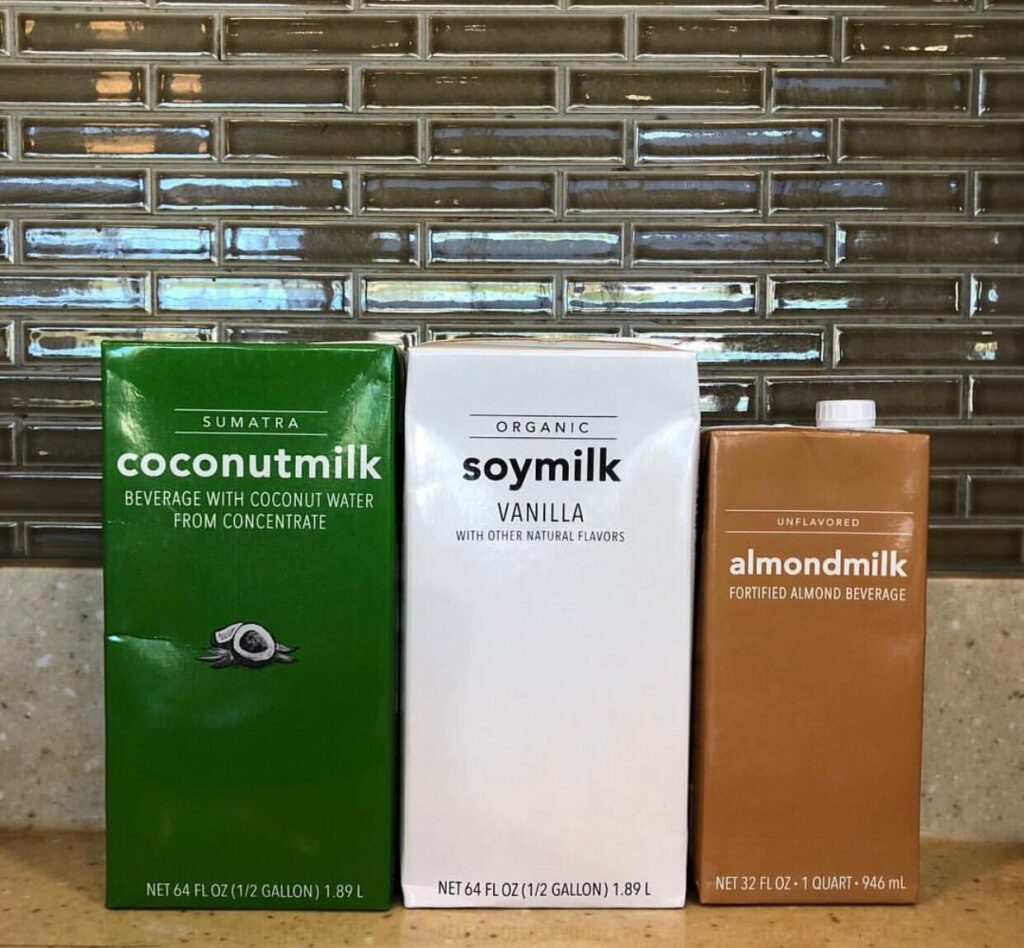
Plant-based milk has become a staple at Starbucks, with soy, almond, coconut, and oat milk options showing up in nearly every drink. But here’s what most people don’t realize, the milks Starbucks uses aren’t the same ones you’ll find in stores.
They’re custom-made blends designed to steam smoothly, stay creamy in espresso, and taste consistent across thousands of locations.
In this guide, we’ll break down what plant-based milks Starbucks really uses, and why each one is slightly different.
Quick Summary Table
| Milk Type | Brand | Closest Store Version |
| Soy | Exclusive Starbucks blend | Silk Very Vanilla |
| Almond | Starbucks custom blend | Almond Breeze Unsweetened |
| Coconut | Starbucks custom blend (Sumatra) | So Delicious Unsweetened |
| Oat | Oatly Barista Edition | Oatly Barista |
Starbucks Soy Milk: The OG Dairy-Free Option
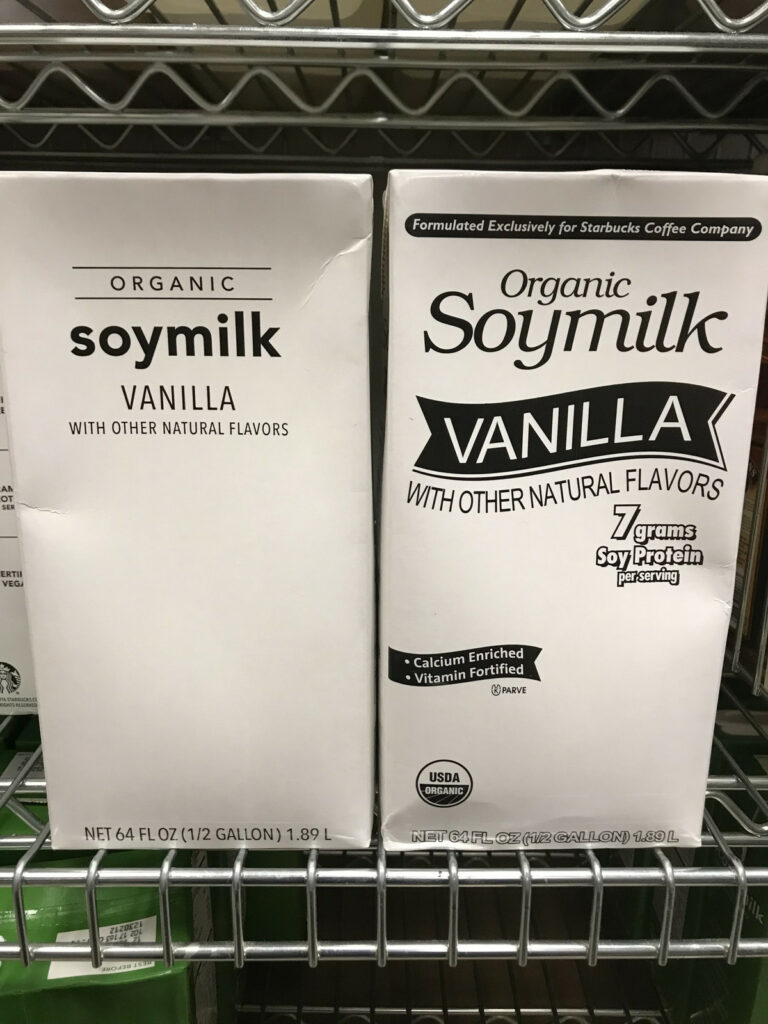
Soy was Starbucks’ first alt milk (introduced in 1997), and it’s still the quiet classic.
So, what brand of soy milk does Starbucks use?
Here’s the secret: you can’t buy their exact soy milk anywhere. It’s made exclusively for Starbucks, customized for steaming and flavor stability in espresso.
Baristas on Reddit say the closest match is Silk Very Vanilla Soy Milk, slightly sweeter, but similar body.
One Starbucks employee stated, “Our soy milk is actually sweetened with Vanilla, so any vanilla soy milk you find should be fairly close!.”
Starbucks Almond Milk: The Cleanest Flavor (With a Catch)
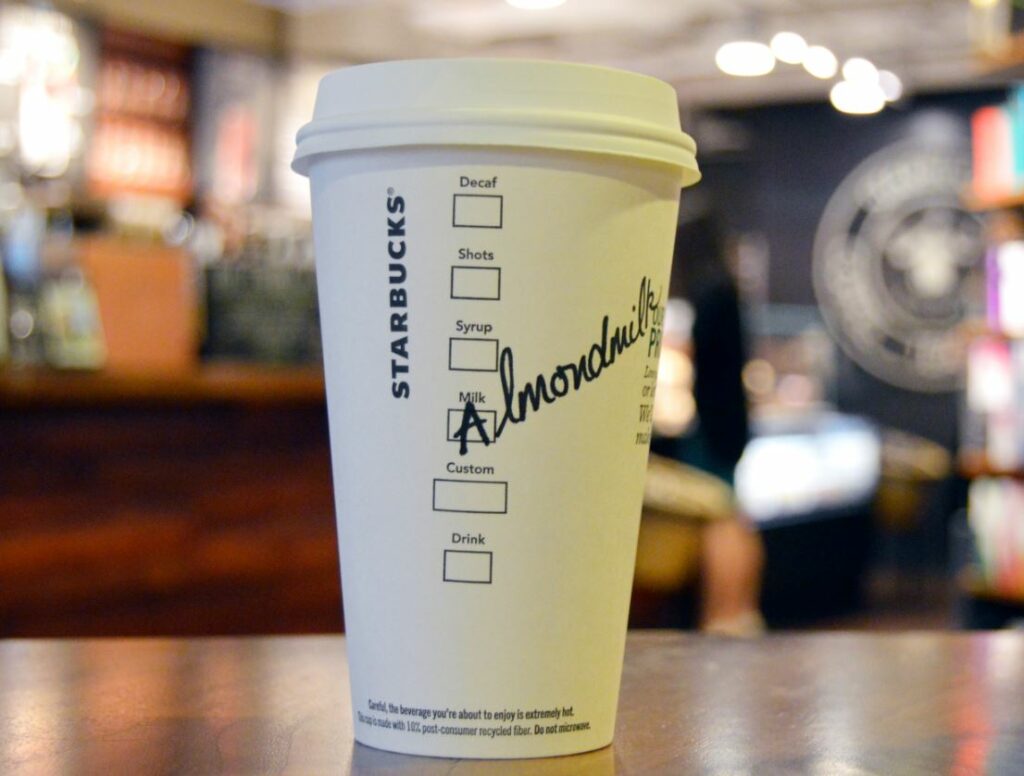
Wondering what brand of almond milk Starbucks uses?
Like the soy version, it’s a Starbucks-only formula, developed with suppliers for a thinner texture that won’t overpower espresso.
When stores run out, some baristas have shared that they substitute with Almond Breeze Unsweetened Original, which behaves similarly when steamed.
“Whenever our store runs out we have been instructed to only buy almond breeze unsweetened original. So that’s probably the closest.”
Reddit threads also recommend Califia Farms Unsweetened Almond Milk for home use if you want something smoother and creamier.
Starbucks Coconut Milk: Not As “Natural” As It Sounds
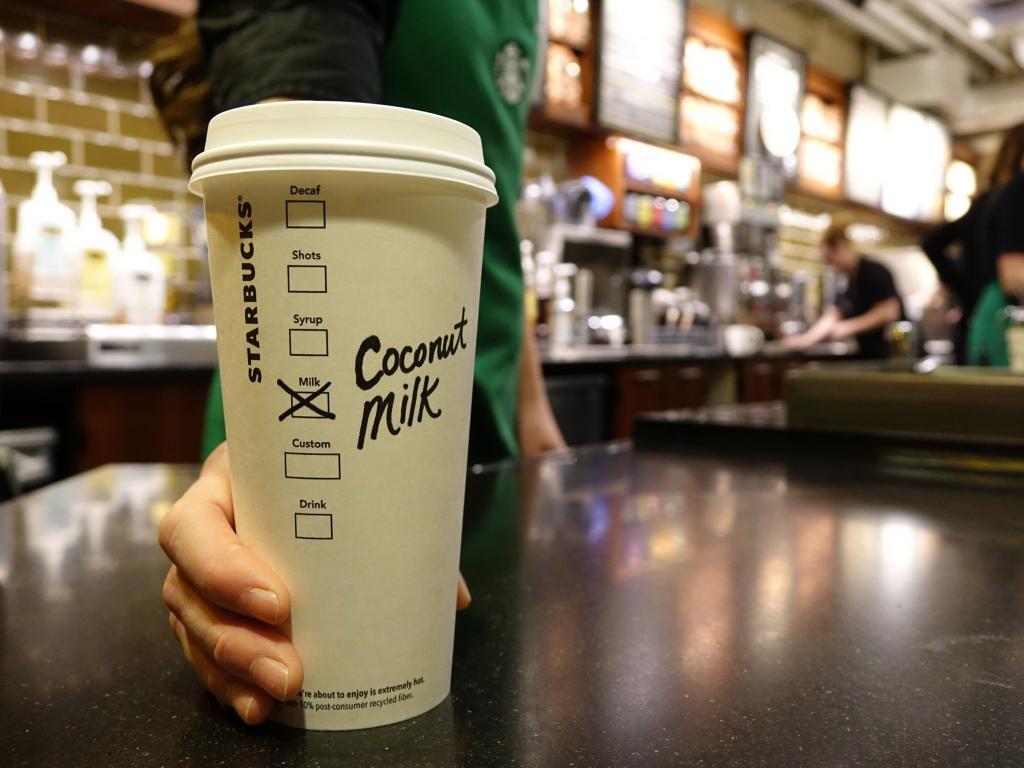
If you’ve ever asked “what brand of coconut milk does Starbucks use,” the answer’s a little complicated.
Their coconut milk comes from Sumatran coconuts, but it’s a proprietary blend — not the pure, canned kind.
According to Mashed, it contains additives and emulsifiers to keep it stable in coffee and prevent separation.
Translation: not bad, but not your organic coconut milk from the grocery store.
It’s sweeter, higher in sugar, and better in cold drinks than in espresso.
If you like it, try So Delicious Unsweetened Coconut Milk or Thai Kitchen at home for something close, minus the extra sugar.
Starbucks Oat Milk: The New Favorite
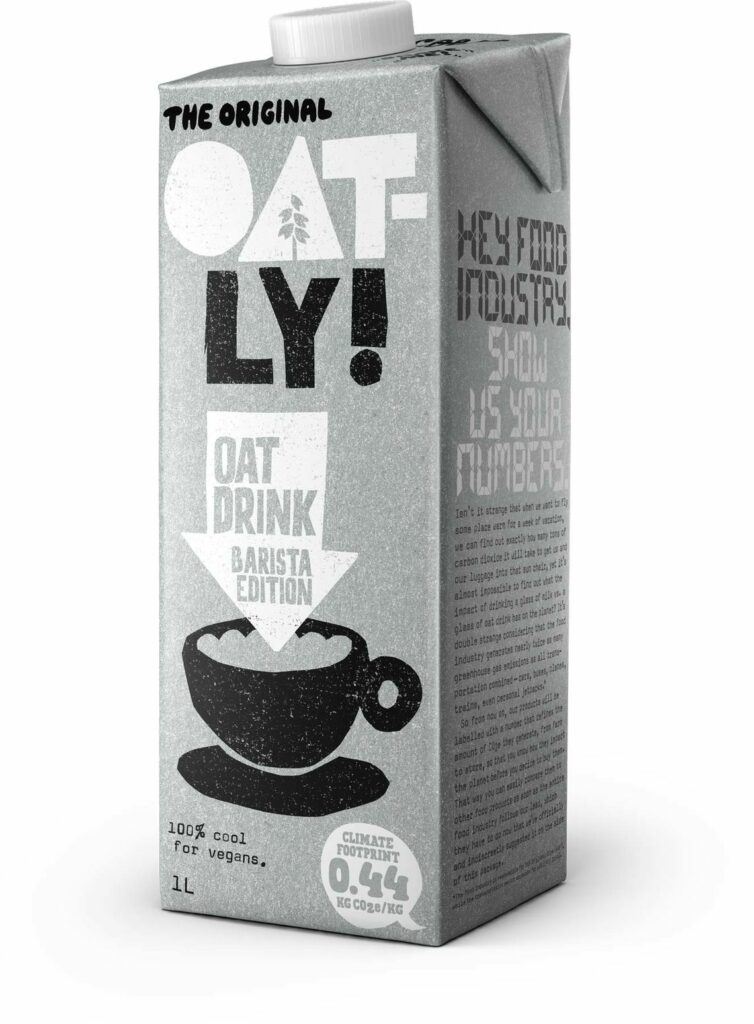
In 2021, Starbucks announced that their U.S. customers can enjoy Oatly oatmilk as an option for customers who prefer a non-dairy option.
According to their press release, they stated that Oatly oatmilk is creamy, delicious, plant-based, and pairs perfectly with Starbucks espresso, including the new Iced Brown Sugar Oatmilk Shaken Espresso and Honey Oatmilk Latte.
If you’re recreating your drink at home, grab the Oatly Barista Edition, not the regular one. The fat content makes all the difference.
Why Starbucks Uses Custom Blends
Starbucks isn’t just pouring store-bought almond or soy milk into your drink, they’ve worked with major suppliers like Danone (for soy and almond) and Oatly (for oat milk) to create exclusive, barista-grade blends that behave the same way everywhere in the world.
Why? Because when you’re running over 35,000 stores, consistency is everything.
The soy latte you get in Seattle should taste just like the one in Singapore.
Here’s what those custom blends are designed to do:
- Froth perfectly under espresso steam.
Regular plant milks often scorch, split, or create big bubbles. Starbucks’ versions are formulated to hold microfoam, that smooth, glossy foam baristas need for lattes and cappuccinos. - Stay stable in acid.
Coffee is slightly acidic, and that can make normal almond or soy milk curdle. Starbucks’ custom blends are buffered with minerals and emulsifiers so they stay silky, not grainy. - Taste consistent all year long.
Crop quality changes seasonally, but your latte shouldn’t. By controlling the formula, Starbucks makes sure every pour has the same sweetness, texture, and color, whether the almonds came from California or Spain.
In short, these milks aren’t about exotic flavors, they’re about operational control.
Every drink needs to look, taste, and foam the same, whether it’s made by a new hire in Kansas or a seasoned barista in Kyoto.
That’s the Starbucks way, engineered consistency disguised as everyday coffee.
Before You Go
If this helped you finally figure out what’s really in your Starbucks plant-based drinks, there’s plenty more where that came from.
We cover everything Starbucks, from ingredient deep-dives to drink hacks, prices, and behind-the-barista insights.
Keep exploring in our Starbucks Hub, your one-stop guide to everything happening inside (and behind) your favorite coffee chain.